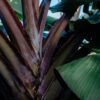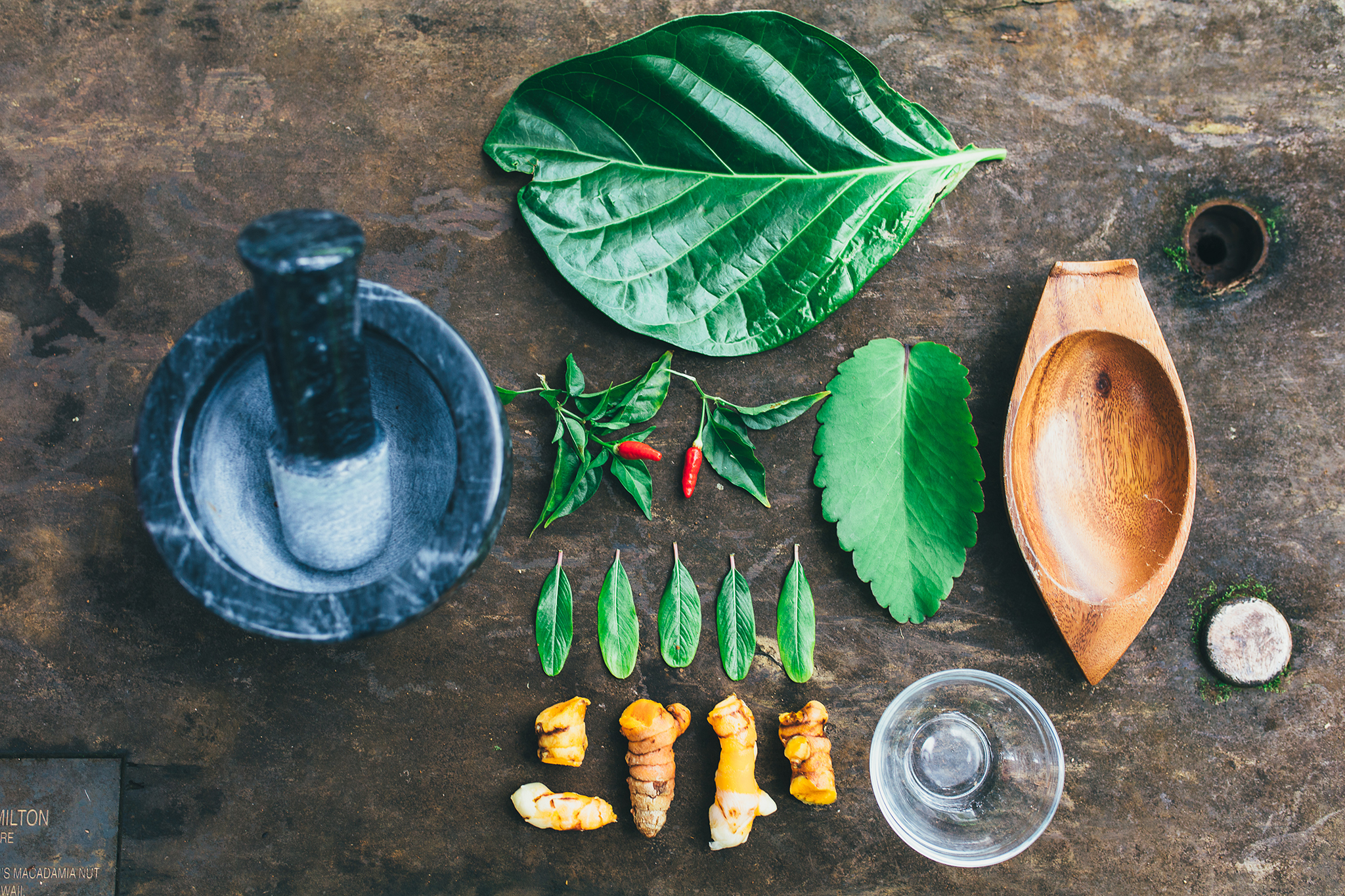Emmalani Makepa-Foley-Wong
Beneath the canopy of an ‘ulu tree at Lyon Arboretum in Mānoa Valley, Emmalani Makepa-Foley-Wong sets up her materials: two nīoi fruit, ‘ōlena rhizomes, blades of kīhāpai and ‘oliwa kū, and a noni leaf that is the shape of a heart.
“All plants have a purpose,” she says, her hands held over the spread of foliage. Emmalani, a lā‘au lapa‘au practitioner formally trained in this plant-based Hawaiian healing tradition, prepares to pule, or pray, over these species, which are commonly used in the practice. “People who live in Hawai‘i especially should know what our plants are and what to use them for,” she says.
Within the 200-acre grounds of the arboretum, there are two areas—the ethnobotanical garden and lā‘au lapa‘au garden—dedicated to illuminating visitors on the healing properties of endemic and naturalized plants.
Flourishing near where Emmalani sits is the lā‘au lapa‘au garden, where a māmaki shrub, whose muted-green leaflets can be brewed into a calming tea to regulate diabetes and high blood pressure, is found. Next to it, flowers blossom on an ‘awapuhi kuahiwi, the gel of which can be used as both a hair and skin conditioner. When Emmalani refers to these lā‘au plants, she calls them “warriors in healing.”
The garden is special to Emmalani, who was first brought here by her late kumu, Levon Ohai, a seventh generation lā‘au lapa‘au healer from Kaua‘i. After graduating from University of Hawai‘i at Mānoa with a degree in Hawaiian Studies, Emmalani was hired as Lyon Arboretum’s first cultural educator, tasked with the job of implementing visitor programs that drew deeper connections between the plants thriving there and Hawaiian culture. In this sense, the arboretum is a living, breathing classroom.
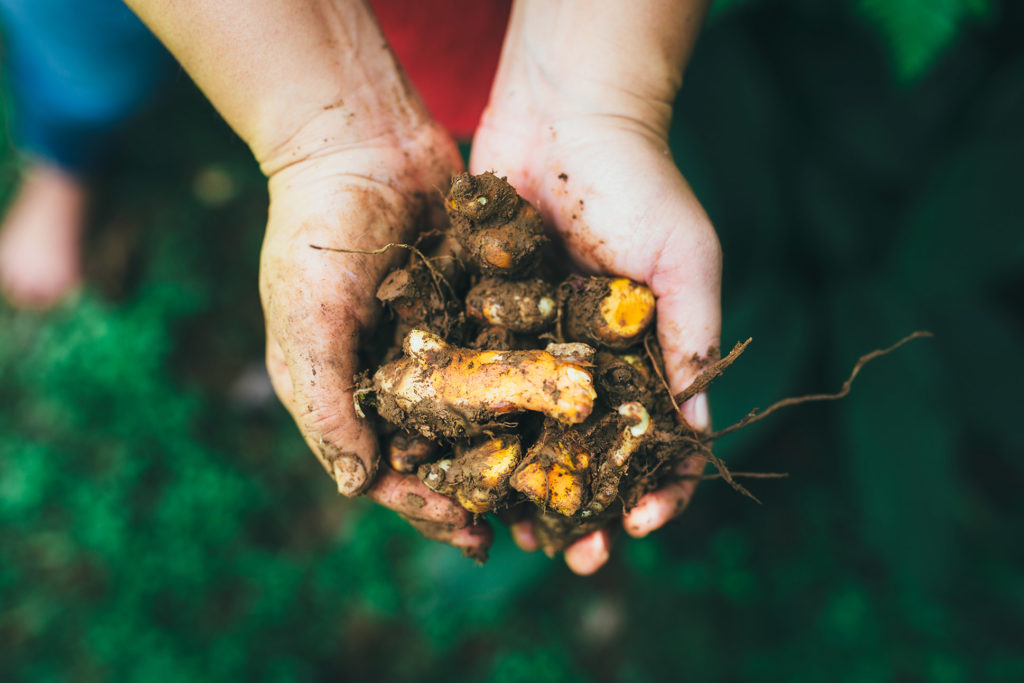
You May Also Like: The Genius of Place
Lā‘au lapa‘au, the practice of using medicinal materials found in nature for healing, has roots that reach back centuries. In the Kumulipo, a bedrock Hawaiian genealogy chant, healers are mentioned by name, alongside the students they taught. Not so unlike today’s diverse medical field, throughout precontact Hawai‘i, there were kāhuna lapa‘au (expert healers or priests) whose practices and specialties ranged from treating the ailments of children to addressing malevolent illnesses tied to sorcery.
Lā‘au lapa‘au fell under an ancient order of kāhuna hāhā, healers who diagnosed patients by touch (hāhā is the word for “grope”). This class was distinguished from other healing practices, according to literature by 19th-century historian Samuel Kamakau, by its use of visual-aids and hands-on teaching, most notably the papa ‘ili‘ili, a life-size diagram of a person created with pebbles placed on the ground. Primary references like this serve “as one of the few models of traditional and professional precontact education that we know of in such detail,” wrote Malcolm Nāea Chun, in his book Kāhuna, citing Kamakau.
This Hawaiian ideal of instruction—a process of learning by observation, listening, example, mentoring, and experimentation—continues with students turned teachers like Emmalani, who is now introducing the practice to the next generation of lā‘au-conscious individuals as a Hawaiian studies lecturer at Windward Community College. “The plants are vital, but the spirit and the ability to connect with the unseen are of equal or greater importance,” Emmalani says, of lā‘au lapa‘au’s distinction from naturopathy and Western medicine.
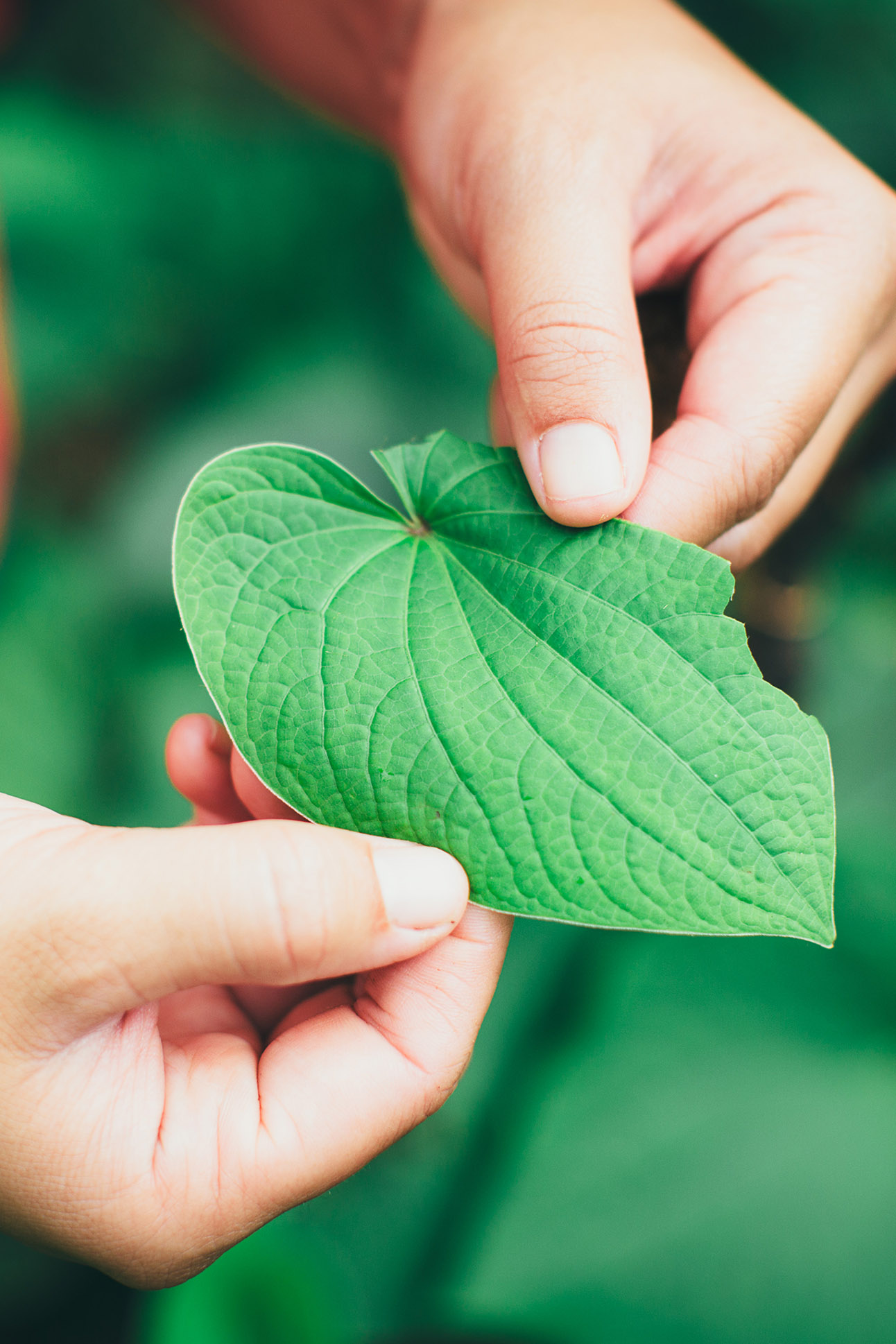
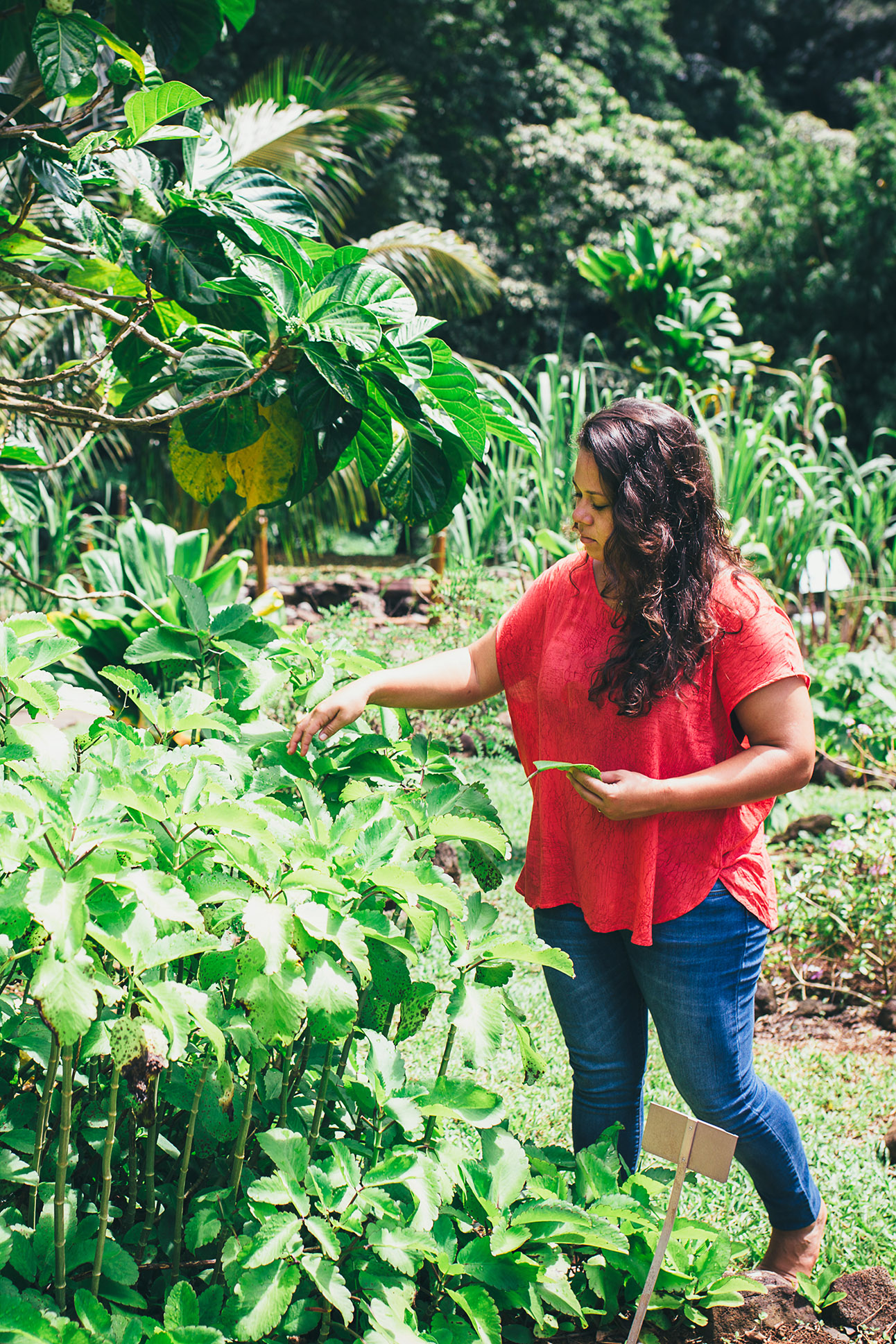
There has been a renewed interest in the practice of lā‘au lapa‘au over the past decade. Its revivals, historically, have been linked to major upheavals in Hawai‘i: In the early 1800s, the practice became crucial in response to an unprecedented decline in the population due to foreign diseases introduced by the earliest Western explorers; in 1866, with a community still in decline, the Maui group ‘Ahahui Lā‘au Lapa‘au of Wailuku mobilized to create the framework for legitimizing practitioners with certificates from the then-government’s Board of Health. Today, a blossoming awareness of the environment and reclamation of Hawaiian culture appears to factor into its resurgence.
“People are starting to shift in consciousness, in terms of medicine and healthcare options,” Emmalani says. “Times are different, but the foundation is the same. The community deserves options when it comes to health. But this new wave or resurgence in the healing practices are not for all, and are not to be taken lightly or confused with naturopathic medicine. Our kūpuna knew about mana, they knew how to communicate with spirit to restore balance, and we as their descendants have that knowing within us, and the kuleana, or responsibility, to do the same.” —M.D.
Ke‘oni Hanalei
Normally shrouded in clouds, ‘Īao Valley’s lush peaks rise proud and unencumbered. The sky shines a misty blue. “We hardly ever have days like this,” Ke‘oni Hanalei marvels. Born and raised on Maui, Hanalei is the founder of Pōhala Botanicals, a line of teas, tinctures, oils, and mists derived from foraged ferns. As a practitioner of fern medicine, part of his plant-gathering protocol is acknowledging hō‘ailona (signs). Hanalei smiles at me before turning his face to the sun. “This is really special,” he says.
Medicinal practices of lā‘au lapa‘au have long reflected the deep cultural and spiritual connection Hawaiians have to the environment. Plant-based treatments for disease and injury are rich and extensive: ‘awa for reducing insomnia and anxiety, ‘ōlena (turmeric) for its anti-inflammatory properties, noni for treatment of deep wounds. Ferns are also used in lā‘au lapa‘au, but Hanalei believes these plants are particularly special: They represent emotions, the subtle, intelligent energy that underlies all life. “Fern medicine is all about the healing properties of ikehu (energy),” Hanalei says.
If emotions can shape our experience, they can also influence our healing, Hanalei claims. “The spirit is truly the seat of our consciousness and house of power,” Hanalei says. “This is how we nourish our physical bodies. We begin with the spirit.” Hanalei sources ferns from private lands on Maui and Kaua‘i. Each of the 103 ferns he works with correlates with a distinct emotion, trait, or virtue and is either masculine or feminine—masculine ferns being steeped in logic and reason, whereas feminine ferns represent intuition and emotional health.
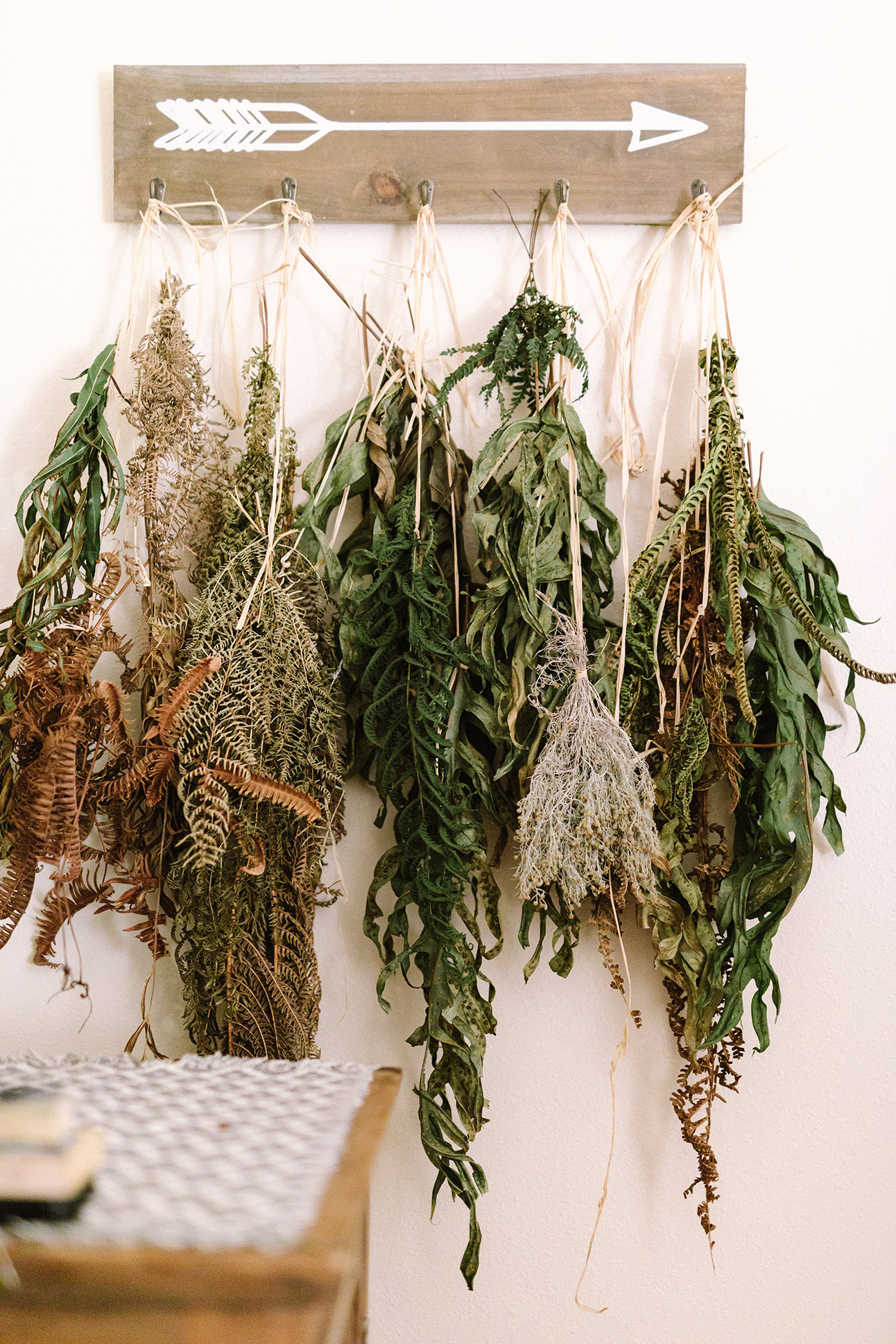

His personal fern catalog, curated and fine-tuned over the last three decades, is a blend of the ephemeral and botanical: The palapalai fern, with its lime-green fronds and distinctive hairy blades, sourced by hula practitioners for adornment, represents divine discipline; the puapuamoa, a fern that is slender, elegant, and elongated, speaks to divine vulnerability; the full-spreading ni‘ani‘au fern, often found growing near lo‘i, personifies divine abundance. Fern medicine allows us to reconnect and commune with emotional energies, according to Hanalei. In embracing them, we pave a pathway to our higher selves.
Hanalei’s introduction to medicinal ferns came at the behest of his maternal grandmother, Kau‘ikeonalani Kaipo-Akina, who was a kahuna (healer).
“Tūtū sounded like she was perpetually chanting, there always was this vibrato to her voice,” Hanalei says. “She intimidated people because she was not afraid to express her power.” Kaipo-Akina raised Hanalei, her last grandchild, as a way to pass down her ancestral knowledge. “My tūtū taught me everything I know about fern medicine,” Hanalei says.
We head into the deep green of the forest, our footsteps pressing kukui nut shells into the cool, damp earth. The latticework of branches above us dapples sunlight onto our faces. Hanalei moves with ease and a practiced eye, pausing at intervals to introduce ferns.
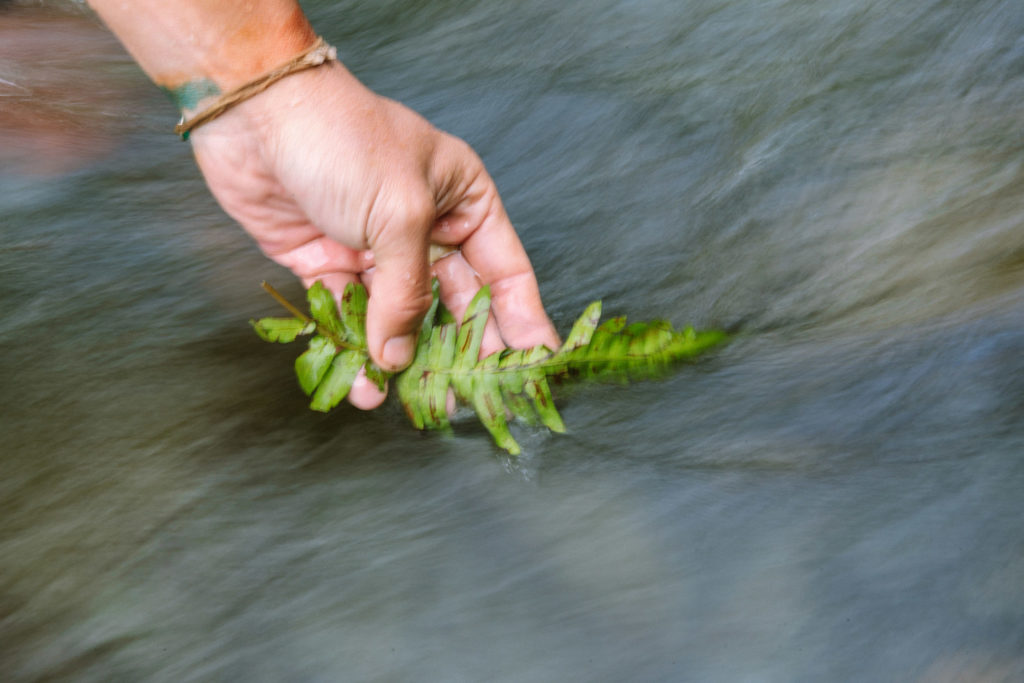
“This is pa‘iwa‘iwa,” he says, gently stroking a fragile-looking fern with dainty, heart-shaped leaf clusters. “She represents divine truth.” Moments later, he points out a broad, tapering fern, and says, “That one is laukahi, he’s divine magnetism.” The botanical irony doesn’t escape me later when I learn that laukahi is especially attractive to ants and spider mites.
We hear the stream before we see it. When Hanalei enters the water, he breaks into an ‘oli, an offering of respect. Around him, the currents rush swift and cold in the winter sun. He seeks a space among the boulders to submerge a jar filled with ferns. He tells me he will leave it here until the next moon phase, upon which he will bury it in the earth for another moon phase, then leave it exposed in an open field for yet another. Lastly, he will enact the “elemental procession,” ritually burning the plant matter.
Infused with the sacred, elemental energies of water, earth, air, and fire, the residual white ash—what Hanalei considers to be the plant’s DNA in purest form—will be a potent, spagyric medicine. Each Pōhala creation includes this medicine, Hanalei explains. Users can add a few drops of fern tincture into tea, diffuse a fern mist into their homes, or lather fern oils directly onto their skin.
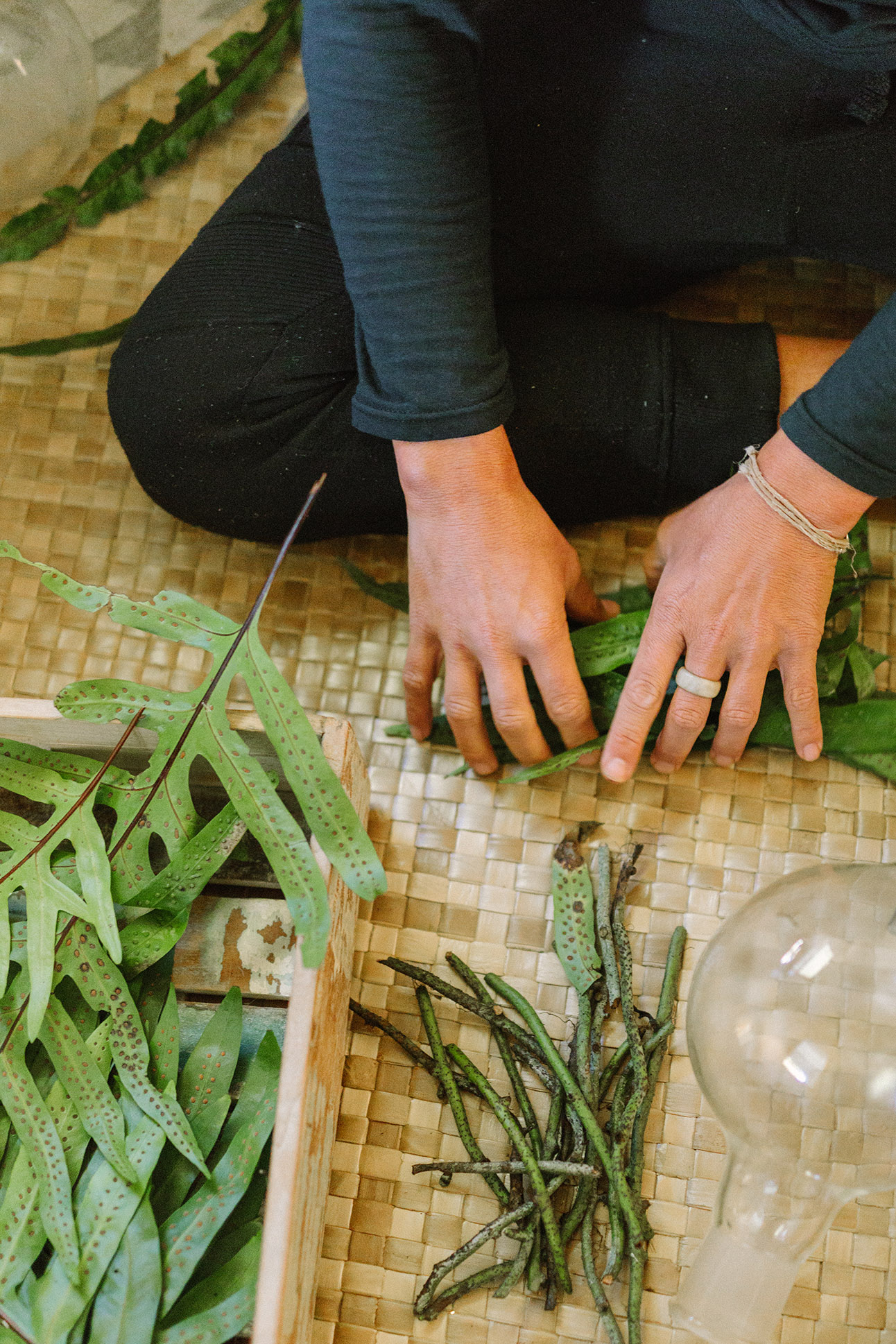
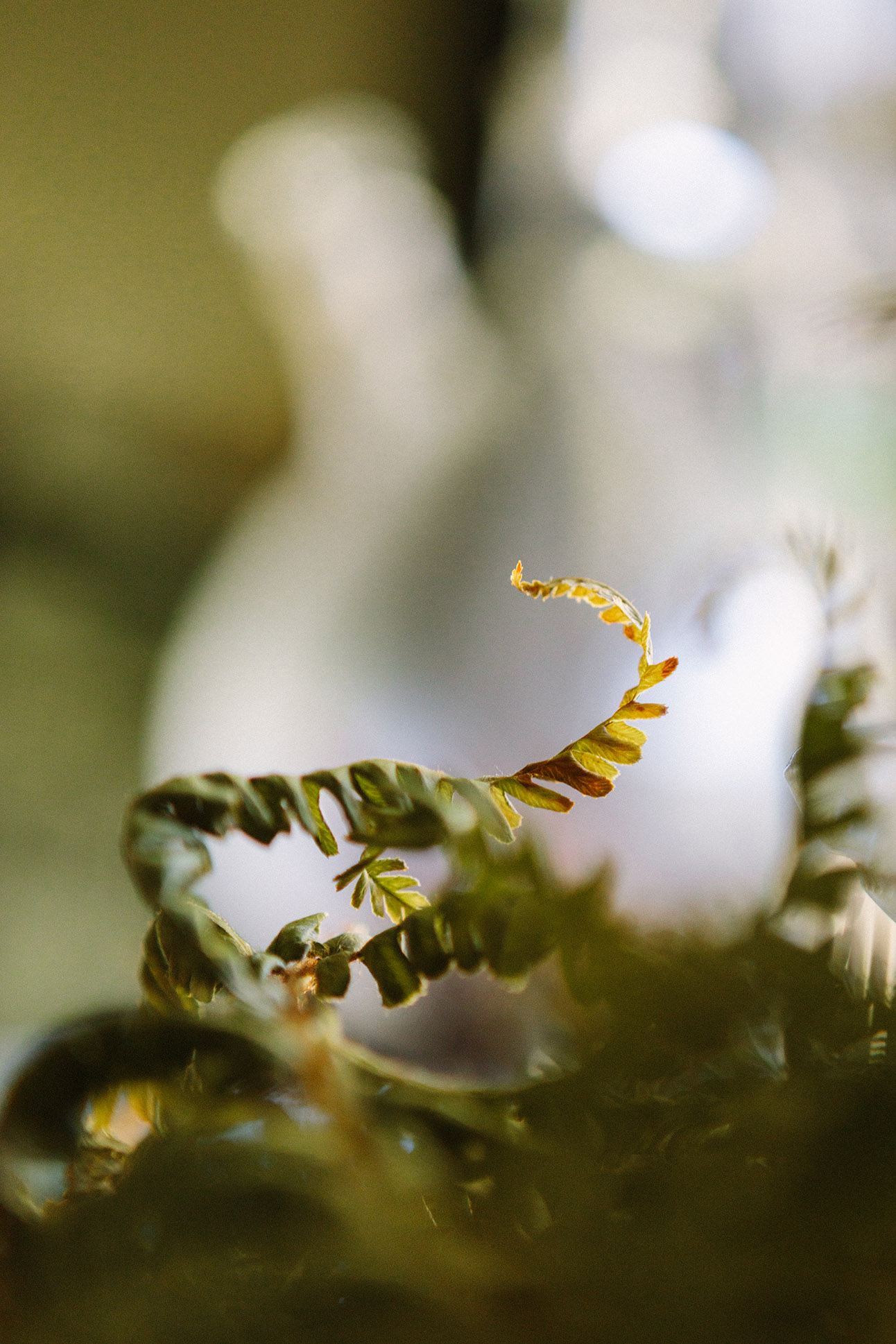
Back at his cottage in the uplands of Kula, Hanalei applies modern methods of fermentation, steam distillation, and enfleurage to his cultural practice. In a cozy room, bundles of dried ferns hang on the wall. A tiered table holds tidy rows of glass jars and bottles. Next to a window, a distiller is full of freshly cut laua‘e ferns. As the boiling water steams through the green foliage, a light, nearly imperceptible fragrance releases into the air. Soon, the scent becomes heady and intoxicating. Laua‘e, he tells me, is the representation of divine beauty. —R.S.

